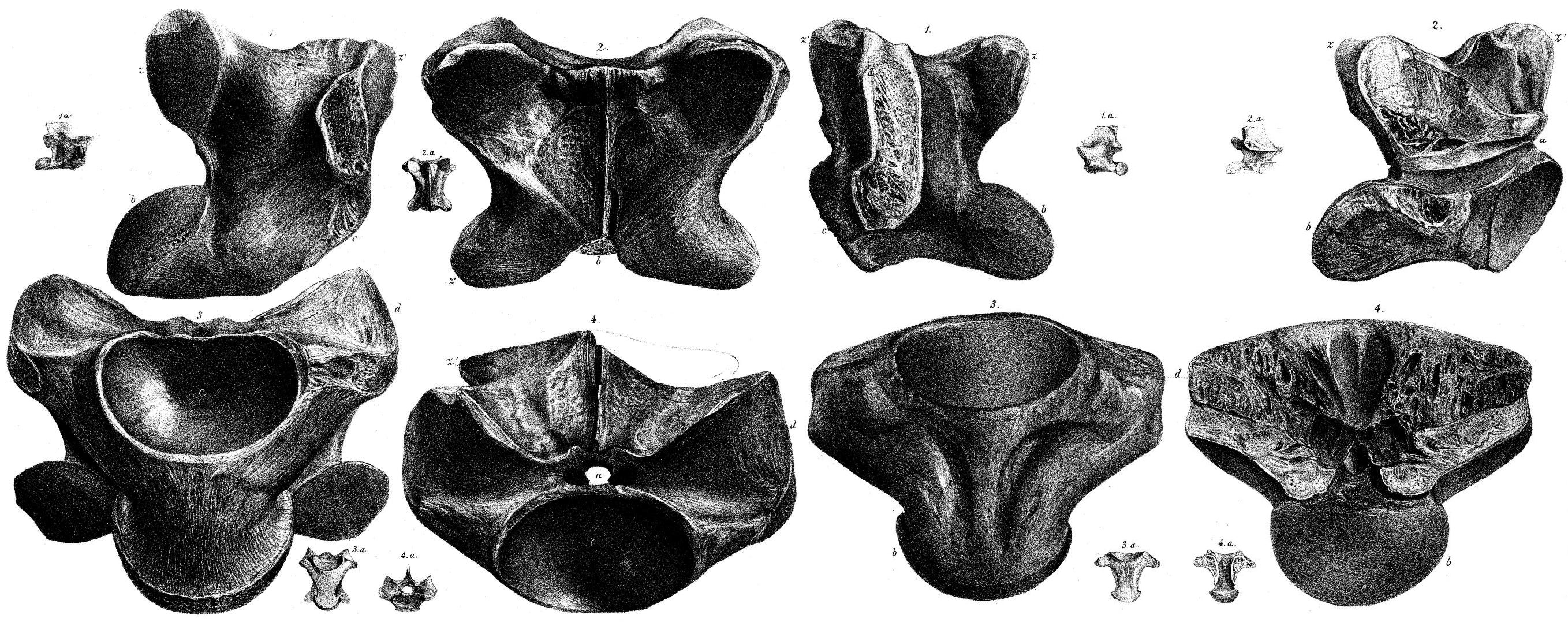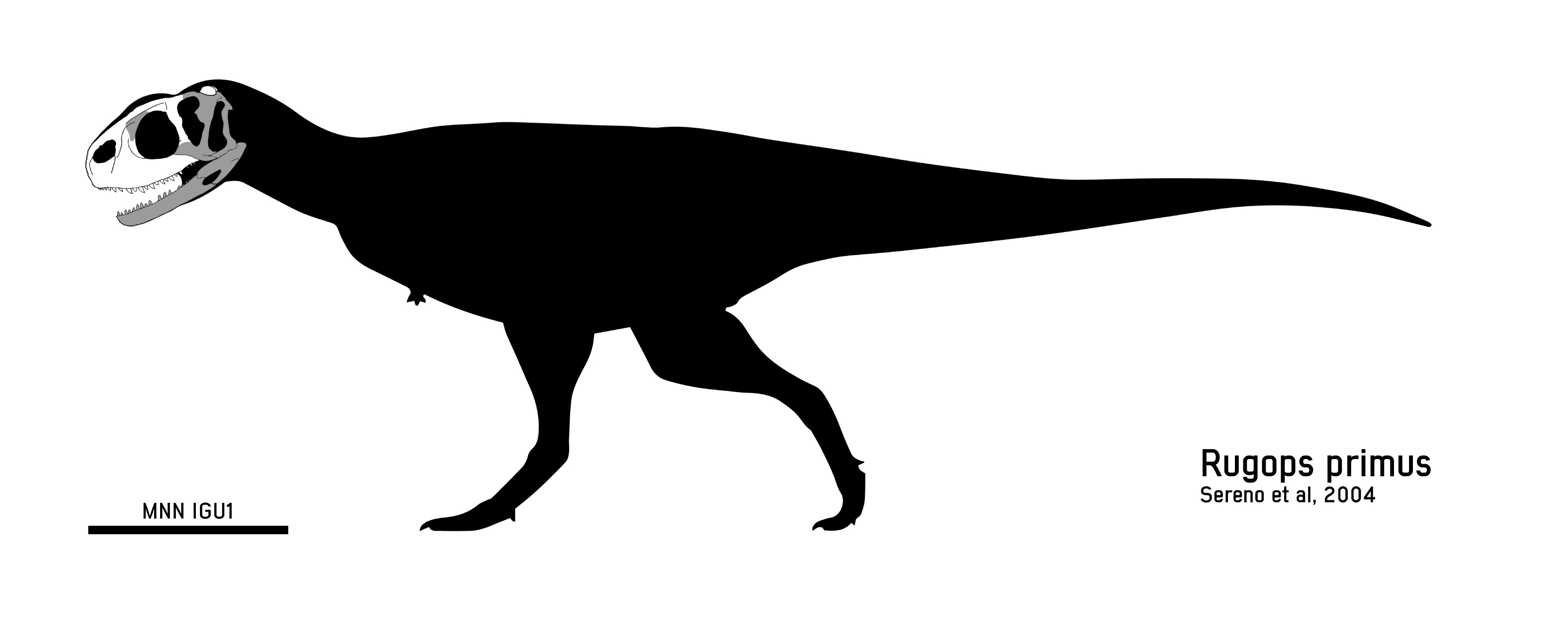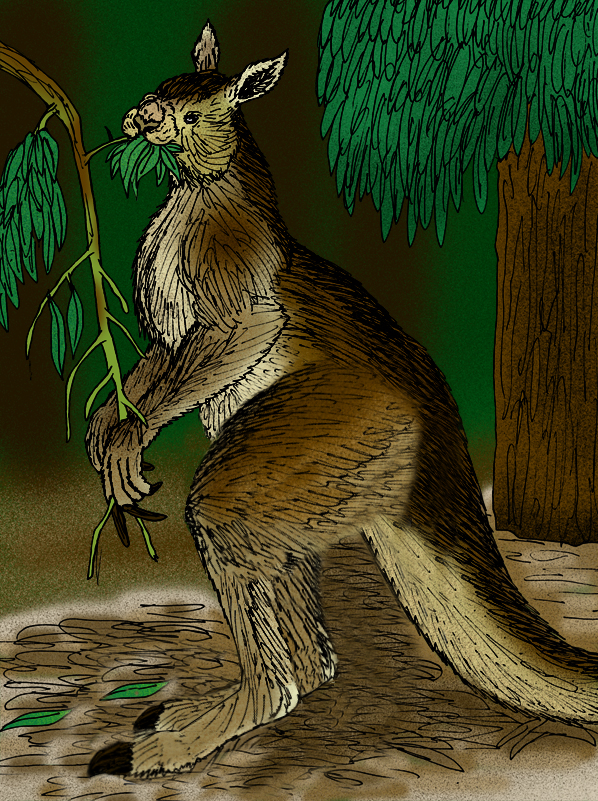|
Monsters Resurrected
''Monsters Resurrected'' is an American documentary television series that premiered on September 13, 2009, on the Discovery Channel. The program reconstructs extinct animals of both Mesozoic and Cenozoic. It is also called ''Mega Beasts''. Featured animals Creatures in ''bold'' are the featured animals of their episodes. *''Acrocanthosaurus'' *'' Amphicyon ingens'' *''Carcharodontosaurus'' *'' Cretoxyrhina mantelli'' *''Daeodon'' (identified as ''Dinohyus'') *''Dallasaurus'' *''Deinonychus'' *''Diprotodon'' *''Dolichorhynchops'' * Edward's wolf (''Canis edwardii'') *''Epicyon haydeni'' *''Hipparion'' *Marsupial lion (''Thylacoleo carnifex'') *''Megalania'' *''Megalonyx'' *''Merychippus'' *''Moropus'' *''Neochoerus aesopi'' *''Paralititan'' *'' Procoptodon goliah'' *''Ramoceros'' *''Rugops'' *''Sarcosuchus'' *''Sauropelta'' *''Sauroposeidon'' (identified as ''Paluxysaurus'') *'' Smilodon gracilis'' *''Spinosaurus'' * ''Styxosaurus snowii'' *''Tenontosaurus'' *'' Titanis'' *'' ... [...More Info...] [...Related Items...] OR: [Wikipedia] [Google] [Baidu] |
Megalania
Megalania (''Varanus priscus'') is an extinct species of giant monitor lizard, part of the megafaunal assemblage that inhabited Australia during the Pleistocene. It is the largest terrestrial lizard known to have existed, reaching an estimated length of 3.5 to 7 metres (11.5 – 23 ft), and weighing between , but the fragmentary nature of known remains make estimates highly uncertain. Megalania is thought to have had a similar ecology to the living Komodo dragon (''Varanus komodoensis''). The youngest fossil remains of giant monitor lizards in Australia date to around 50,000 years ago. The first indigenous settlers of Australia might have encountered megalania, and been a factor in megalania's extinction. While originally megalania was considered to be the only member of the titular genus "''Megalania''", today it is considered a member of the genus ''Varanus'', being closely related to other Australian monitor lizards. Taxonomy Sir Richard Owen described the first known ... [...More Info...] [...Related Items...] OR: [Wikipedia] [Google] [Baidu] |
Spinosaurus
''Spinosaurus'' (; ) is a genus of spinosaurid dinosaur that lived in what now is North Africa during the Cenomanian to upper Turonian stages of the Late Cretaceous period, about 99 to 93.5 million years ago. The genus was known first from Egyptian remains discovered in 1912 and described by German palaeontologist Ernst Stromer in 1915. The original remains were destroyed in World War II, but additional material came to light in the early 21st century. It is unclear whether one or two species are represented in the fossils reported in the scientific literature. The best known species is ''S. aegyptiacus'' from Egypt, although a potential second species, ''S. maroccanus'', has been recovered from Morocco. The contemporary spinosaurid genus ''Sigilmassasaurus'' has also been synonymized by some authors with ''S. aegyptiacus'', though other researchers propose it to be a distinct taxon. Another possible junior synonym is ''Oxalaia'' from the Alcântara Formation in Brazil. ' ... [...More Info...] [...Related Items...] OR: [Wikipedia] [Google] [Baidu] |
Smilodon Gracilis
''Smilodon'' is a genus of the extinct machairodont subfamily of the felids. It is one of the most famous prehistoric mammals and the best known saber-toothed cat. Although commonly known as the saber-toothed tiger, it was not closely related to the tiger or other modern cats. ''Smilodon'' lived in the Americas during the Pleistocene epoch (2.5 mya – 10,000 years ago). The genus was named in 1842 based on fossils from Brazil; the generic name means "scalpel" or "two-edged knife" combined with "tooth". Three species are recognized today: ''S. gracilis'', ''S. fatalis'', and ''S. populator''. The two latter species were probably descended from ''S. gracilis'', which itself probably evolved from ''Megantereon''. The hundreds of individuals obtained from the La Brea Tar Pits in Los Angeles constitute the largest collection of ''Smilodon'' fossils. Overall, ''Smilodon'' was more robustly built than any extant cat, with particularly well-developed forelimbs an ... [...More Info...] [...Related Items...] OR: [Wikipedia] [Google] [Baidu] |
Sauroposeidon
''Sauroposeidon'' ( ; meaning "lizard earthquake god", after the Greek god Poseidon) is a genus of sauropod dinosaur known from several incomplete specimens including a bone bed and fossilized trackways that have been found in the U.S. states of Oklahoma, Wyoming, and Texas. The fossils were found in rocks dating from near the end of the Early Cretaceous (Aptian–early Albian), from about 113 to 110 million years ago, a time when sauropod diversity in North America had greatly diminished. It was the last known North American sauropod prior to an absence of the group on the continent of roughly 40 million years that ended with the appearance of ''Alamosaurus'' during the Maastrichtian. While the holotype remains were initially discovered in 1994, due to their unexpected age and unusual size they were initially misclassified as pieces of petrified wood. A more detailed analysis in 1999 revealed their true nature which resulted in a minor media frenzy, and formal publication of th ... [...More Info...] [...Related Items...] OR: [Wikipedia] [Google] [Baidu] |
Sauropelta
''Sauropelta'' ( ; meaning 'lizard shield') is a genus of nodosaurid dinosaur that existed in the Early Cretaceous Period of North America. One species (''S. edwardsorum'') has been named although others may have existed. Anatomically, ''Sauropelta'' is one of the most well-understood nodosaurids, with fossilized remains recovered in the U.S. states of Wyoming, Montana, and possibly Utah. It is also the earliest known genus of nodosaurid; most of its remains are found in a section of the Cloverly Formation dated to 108.5 million years ago. It was a medium-sized nodosaurid, measuring about long. ''Sauropelta'' had a distinctively long tail which made up about half of its body length. Although its body was smaller than a modern black rhinoceros, ''Sauropelta'' was about the same mass, weighing in at about . The extra weight was largely due to its extensive covering of bony armor, including the characteristically large spines projecting from its neck. Description ''Sauropelta'' ... [...More Info...] [...Related Items...] OR: [Wikipedia] [Google] [Baidu] |
Sarcosuchus
''Sarcosuchus'' (; ) is an extinct genus of crocodyliform and distant relative of living crocodilians that lived during the Early Cretaceous, from the late Hauterivian to the early Albian, 133 to 112 million years ago of what is now Africa and South America. The genus name comes from the Greek σάρξ (''sarx'') meaning flesh and σοῦχος (''souchus'') meaning crocodile. It was one of the largest crocodile-like reptiles, reaching an average estimate of and , but estimated to grow up to in body length and weigh up to . It is known from two species, ''S. imperator'' from the early Albian Elrhaz Formation of Niger and ''S. hartti'' from the Late Hauterivian of northeastern Brazil, other material is known from Morocco and Tunisia and possibly Libya and Mali. The first remains were discovered during several expeditions led by the French paleontologist Albert-Félix de Lapparent, spanning from 1946 to 1959, in the Sahara. These remains were fragments of the skull, vertebrae, ... [...More Info...] [...Related Items...] OR: [Wikipedia] [Google] [Baidu] |
Rugops
''Rugops'' (meaning ‘wrinkle face’) is a monospecific genus of basal abelisaurid theropod dinosaur from Niger that lived during the Late Cretaceous period (Cenomanian stage, ~95 Ma) in what is now the Echkar Formation. The type and only species, ''Rugops primus'', is known only from a partial skull. It was named and described in 2004 by Paul Sereno, Jeffery Wilson and Jack Conrad. ''Rugops'' has an estimated length of 4.4–5.3 metres (14.4–17.4 ft) and weight of 410 kilograms (900 lbs). The top of its skull bears several pits which correlates with overlaying scale and the front of the snout would have had an armour-like dermis. Discovery and naming A skull pertaining to an abelisaurid was recovered during an expedition in 2000 led by Paul Sereno near In-Abangharit, Niger Republic. The specimen came from the Echkar Formation of the Tegama Group which dates to the Cenomanian stage of the Late Cretaceous period, 96 Ma. The formation has also yielded specimens pertaining to ... [...More Info...] [...Related Items...] OR: [Wikipedia] [Google] [Baidu] |
Ramoceros
''Ramoceros'' is an extinct genus of the artiodactyl family Antilocapridae endemic to Middle Miocene (Clarendonian) North America.Blount, Kitty and Crowley, Maggie. ''Encyclopedia of Dinosaurs & Prehistoric Life'', p. 271 (Penguin, 2008). Taxonomy ''Ramoceros'' is one of several genera that originated from the subfamily Merycodontinae, of which the pronghorn is the only surviving remnant. In fact, pronghorn is the only surviving remnant of the entire family Antilocapridae.Smithsonian Institution. North American MammalsPronghorn ''Antilocapra americana''/ref> '' Merriamoceros'' was originally placed in ''Ramoceros'' (as ''Ramoceros coronatus''). Description ''Ramoceros'' was a prehistoric relative of modern pronghorn The pronghorn (, ) (''Antilocapra americana'') is a species of artiodactyl (even-toed, hoofed) mammal indigenous to interior western and central North America. Though not an antelope, it is known colloquially in North America as the American a ... (''An ... [...More Info...] [...Related Items...] OR: [Wikipedia] [Google] [Baidu] |
Procoptodon Goliah
''Procoptodon'' is an extinct genus of giant short-faced ( sthenurine) kangaroos that lived in Australia during the Pleistocene Epoch. ''P. goliah'', the largest known kangaroo species that ever existed, stood at about . They weighed about . Other members of the genus were smaller, however; ''Procoptodon gilli'' was the smallest of all of the sthenurine kangaroos, standing approximately tall. The genus is derived from '' Simosthenurus'', making the latter genus paraphyletic. Description ''Procoptodon'' physiology was likely similar to that of the contemporary kangaroos; however, ''Procoptodon goliah'' was characterised by its large size. These sthenurines, or short-faced kangaroos, included species that were more than three times the size of the largest kangaroos living today. The largest, ''P. goliah'', was tall and weighed up to . These animals lived alongside modern species of kangaroos, but specialised on a diet of leaves from trees and shrubs. ''Procoptodon were'' large ... [...More Info...] [...Related Items...] OR: [Wikipedia] [Google] [Baidu] |
Paralititan
''Paralititan'' (meaning "tidal giant") was a giant titanosaurian sauropod dinosaur genus discovered in coastal deposits in the Upper Cretaceous Bahariya Formation of Egypt. It lived between 99.6 and 93.5 million years ago.Holtz, Thomas R. Jr. (2012) ''Dinosaurs: The Most Complete, Up-to-Date Encyclopedia for Dinosaur Lovers of All Ages,'Winter 2011 Appendix./ref> Discovery Joshua Smith in 1999 in the Bahariya Oasis rediscovered the Gebel el Dist site where Richard Markgraf in 1912, 1913 and 1914 had excavated fossils for Ernst Stromer. In 2000, an American expedition was mounted to revisit the site. However, apparently Markgraf had already removed all more complete skeletons, leaving only limited remains behind. At a new site, the nearby Gebel Fagga, the expedition succeeded in locating a partial sauropod skeleton.Nothdurft, William; Joshua Smith; Matt Lamana; Ken Lacovara; Jason Poole & Jen Smith, 2002, ''The Lost Dinosaurs of Egypt: The Astonishing and Unlikely True Story of ... [...More Info...] [...Related Items...] OR: [Wikipedia] [Google] [Baidu] |
Neochoerus Aesopi
''Neochoerus aesopi'' was a relatively large rodent species native to North America until their extinction about 12,000 years ago, being closely related to modern capybaras (genus ''Hydrochoerus''). It was part of the subfamily ''Hydrochoerinae''. Fossils of it have been found in U.S. states such as Florida and South Carolina. The species was originally outlined in 1853, it weighed about 80 kg similar in size to the modern day capybara. It has been synonymized with ''Hydrochoerus holmesi'' and several other formerly recognized extinct taxa. Identification of these types of rodent fossils is an inexact science, and lines between various classifications are often questionable. Unlike extant capybaras, ''N. aesopi'' lived in North America, where its ancestors had migrated from South America during the Great American Interchange. See also *''Hydrochoerinae'' **''Hydrochoerus'' *''Neochoerus'' **''Neochoerus pinckneyi ''Neochoerus pinckneyi'' was a North American species of capyb ... [...More Info...] [...Related Items...] OR: [Wikipedia] [Google] [Baidu] |







